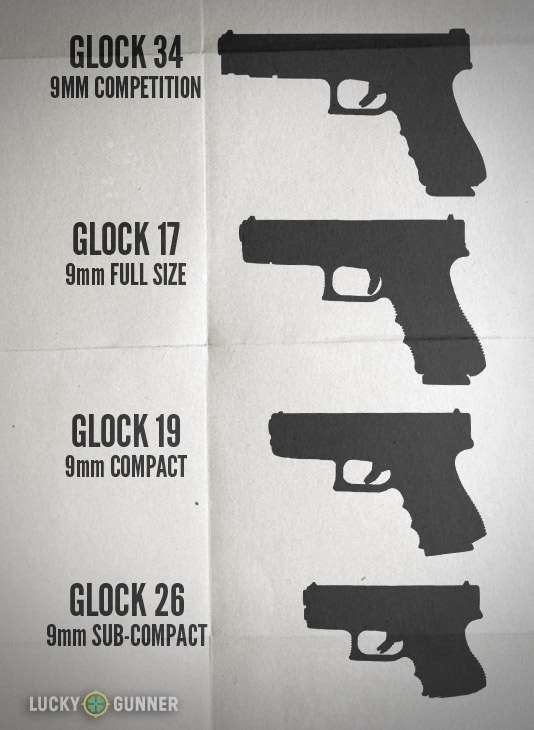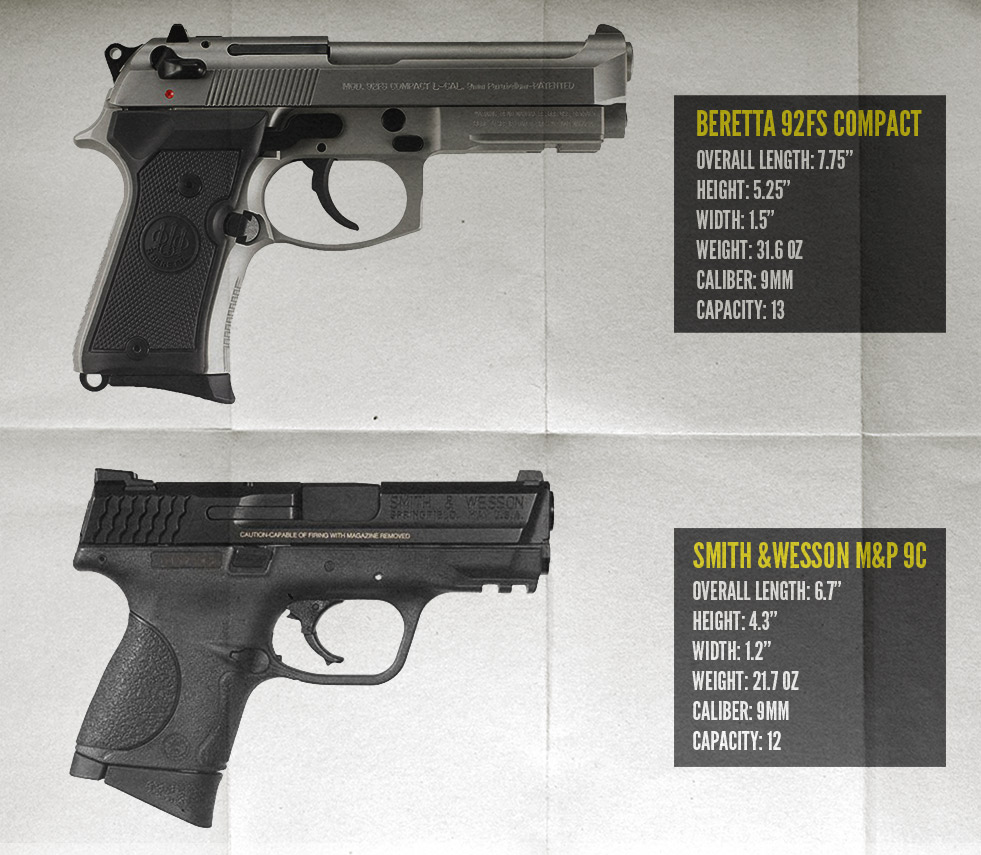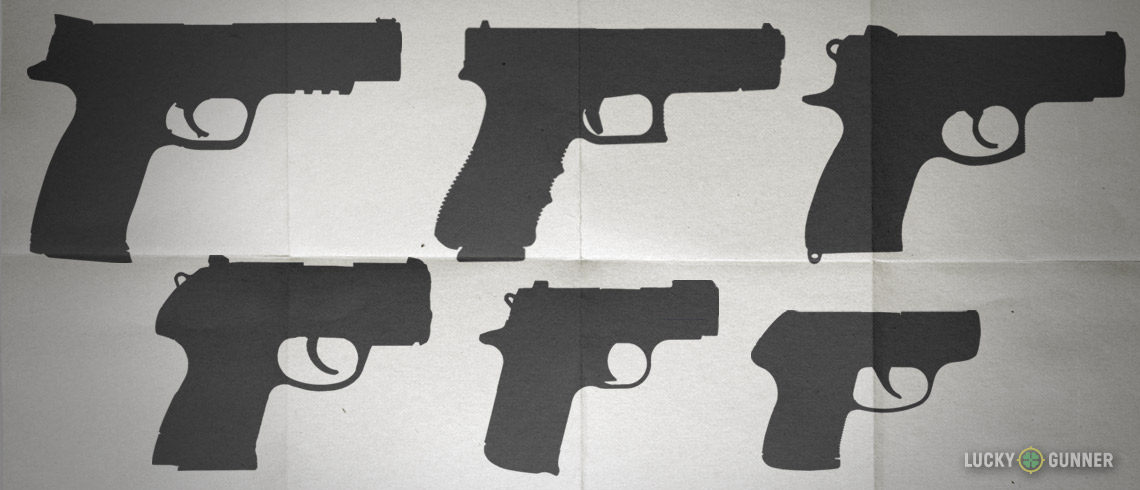When picking out a gun for concealed carry, size is one of the most important deciding factors as well as one of the most difficult to get right. You can pore over all of the dimensions, statistics, and photo comparisons, but there’s no way to really know how the gun will feel in a holster until you actually try it. But most of us still rely on the scores of images and descriptions on the interwebs to help get us pointed in the right direction when we’re trying to figure out if a particular pistol will work for concealed carry.
One issue that makes this process more difficult than it should be is the confusing terminology used to describe handgun sizes. What exactly is a “compact” pistol? Is it a handgun that can be generically described as being small in size, or does it imply a “class” of firearms with dimensions that fall within a specific pre-determined range? Depending on who you’re talking to, either interpretation could be correct.
Ruger, for example, describes both their SR9c and their LCP pistols as “compact”. One is basically a full size double-stack pistol that’s had its barrel and grip chopped down slightly, and the other is one of the lightest and smallest teeny tiny pocket guns on the market. So clearly, Ruger is using “compact” in the more generic sense.

The opposing approach is to think of handgun sizes in terms of very neat self-explanatory categories, like t-shirt sizes. Glock’s lineup exemplifies this mentality, where each caliber is represented by a “family” of pistols in four basic frame sizes; long slide/competition, full size/service, compact, and subcompact. So, for example, the 9mm Glock family looks like this:

This is great when you’re considering a new gun purchase. Just determine what size you want, and then investigate what each brand is offering in that category. Except the gun companies don’t coordinate their model sizes like that and not every gun has a clear counterpart across brands. Smith & Wesson, for example, has long slide and full size M&P pistols that are analogous to Glock’s, but the M&P that S&W calls “compact” is somewhere in size between the compact and subcompact Glocks. To confuse matters even more, here’s what you get when you compare S&W’s version of “compact” to Beretta’s:

So What Should You Takeaway Regarding Handgun Sizes?
I’m not saying that the ability to choose from all of these these different sizes is a problem in itself. It’s great to have choices, and I don’t think the consumer would ultimately benefit if every company limited their offerings to the same four sizes. The issue is in the confusing terminology that’s used in marketing and the way we describe these guns. It leads to consumers having false expectations and wrong assumptions about whether a specific model is appropriate for their needs.
This confusion has become far more pronounced lately with the rising popularity of small, single stack handguns. It started with the diminutive .32 ACP and .380 ACP pistols like the Kel-Tec P32 and Ruger LCP, which fit into a category often described as “mouse guns”, “pocket pistols”, or “micro-compacts.” Those terms all make sense, and I don’t think anyone would argue against placing the sub-12 oz. polymer frame autos in a separate class from a comparatively chunky sub-compact like the Glock 26.
But in recent years, the gap in size between double-stack sub-compacts and pocket pistols has been gradually filled with a wide variety of single stack 9mm, .40 S&W, and .45 ACP pistols. Upon their initial release, some of these guns were mis-characterized as “pocket pistols”, only to be met with criticism from folks who cannot literally fit an M&P Shield in their pants pocket. At other times, they’re considered “sub-compact”, and are compared to pistols that are essentially scaled-down versions of full size service handguns. So if I tell somebody I’m in the market for a “sub-compact 9mm” and I like Berettas, should they suggest a Beretta PX4SC, or the considerably smaller Beretta Pico?
The obvious solution to all of this is to just get your hands on the guns you’re interested in and determine first-hand if they’re right for you. Like I said, if you want to know how big a gun feels when you’re carrying it, you just have to carry it, but the next best thing is to handle it and compare the different models side by side.
I don’t predict any major changes in the near future for terminology used by the industry to describe handguns sizes, and until that happens, my best suggestion is to remember that photographs and descriptions can be misleading, and to compare them in person whenever you can.


Thanks –